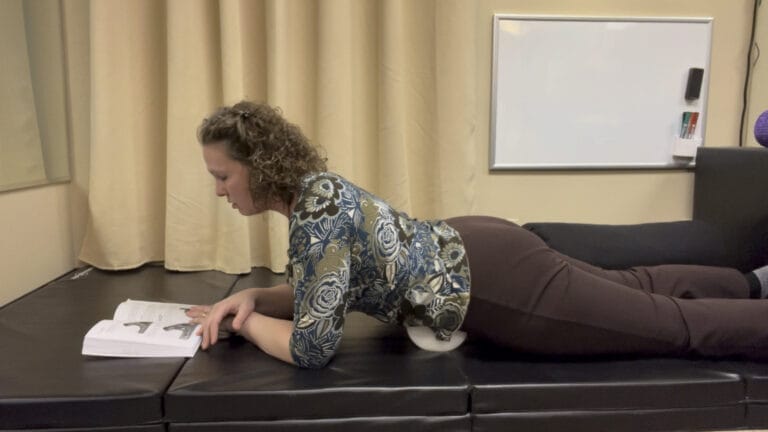Massage Quadratus Lumborum: Techniques and Benefits
The quadratus lumborum (QL) muscle is one of the most misunderstood muscles that in my opinion gets very little respect, but in fact plays an important role in your everyday locomotion and posture. How to massage this muscle will give you more freedom of movement and reduce your pain. Let us look at the anatomy of the QL, the benefits of massage, and techniques for self-massaging.
Understanding the Quadratus Lumborum
The quadratus lumborum is a relatively deep muscle of the lower back that attaches at the bottom edge of the rib cage and runs down under the muscular abdomen to meet the hip bone. This muscle is important for many movements, especially bending and lifting.
If, for example, the QL is tight or strained, this can result in discomfort and restricted movement. This problem could potentially be caused by carrying heavy loads, prolonged sitting, compensating for other injuries, and so on: for a range of people, the QL is a muscle worth knowing how to massage.
Anatomy of the Quadratus Lumborum
The QL muscle lies beneath the abdominal muscles but can be accessed via the side of the back, where the spine meets the pelvis. It is involved in stabilising the pelvis and the spine in a number of movements. Knowing where the QL lies can help in the massage because not targeting it can lead to a pointless experience for you.

Benefits of Massaging the Quadratus Lumborum
Massaging the quadratus lumborum offers numerous benefits, including enhanced muscle relaxation, improved circulation and reduced tension. However, this technique is often overlooked. Many individuals do not appreciate its significance because they may focus solely on more prominent muscle groups. Although it may seem like a minor aspect of overall wellness, addressing the quadratus lumborum can lead to substantial improvements in physical well-being. This muscle plays a crucial role in supporting the spine and facilitating movement. Consequently, neglecting it could result in discomfort or even injury.
- Relief from Pain: Regular massage can alleviate lower back pain and discomfort associated with tightness in the QL.
- Improved Mobility: By loosening tight muscles, massage can enhance your range of motion and flexibility.
- Enhanced Posture: A relaxed QL can contribute to better spinal alignment and overall posture.
- Stress Relief: Massage promotes relaxation, reducing overall stress levels.
Self-Massage Techniques for the Quadratus Lumborum
Now that we understand the key role of the quadratus lumborum, you might want to learn some self-massage techniques to improve your body awareness. These massage techniques can be performed with simple tools, such as a massage ball, at home.
Using Massage Balls
One of the simplest ways to massage the QL is by using massage balls; however, the technique requires proper understanding. Here’s how to do it: although it might seem straightforward, the effectiveness depends on the method employed (and) the pressure applied. This can lead to better outcomes, because proper technique is crucial for success.
- Find a Comfortable Position: Lie on your side with your knees bent, ensuring your back is relaxed. Or up against a wall.
- Place the Ball: Position a massage ball just above your hip bone, targeting the area where the QL is located.
- Apply Pressure: Gently lean your weight onto the ball. You should feel a stretch and pressure in the muscle.
- Move Slowly: Roll the ball around the area, focusing on tight spots. Spend extra time on areas that feel particularly tense.

Using Smaller Balls for Deeper Pressure
If that’s not hard enough, go smaller: A tennis ball or lacrosse ball might provide a little more pressure:
- Switch to a Smaller Ball: Replace the larger massage ball with a smaller one to access deeper layers of muscle.
- Focus on Specific Areas: Target specific points of tightness within the quadratus lumborum.
- Maintain Control: Always ensure that you are not pressing directly on the spine. Move around the muscle as needed.

Understanding the Hip Hiker Muscle
The quadratus lumborum can be described as a ‘hip hiker’ muscle, as it has the ability to elevate the hip. This is a common function that can be over-recruited in situations such as baby-wearing on one hip, or by certain exercises. Here’s how to work on this area.
- Identify Tightness: Pay attention to any tightness you may feel when elevating one hip.
- Massage the Area: Use the techniques discussed above to work on the muscle that helps with this motion.
- Incorporate Stretching: Follow up with gentle stretches to further release tension.

Conclusion
This can make a real difference to how you move and how much pain you feel, as long as you treat yourself to some much-needed quad love. Try to give your side and your back at least a gentle massage most days, and you’ll have a happier back.
We all know the feeling – whether you’re an athlete, a parent of three young children, or a person like me who spends hours hunched over a keyboard – that spasm in the low back that feels like a permanent reminder of all the accumulated tensions of a long day. Next time you’re feeling tight, go find those massage balls and gently work your quadratus lumborum.








